Gansu Tourism
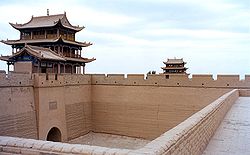
-
Province:Gansu (Chinese: 甘肃, Pinyin:gansu)
-
Population :30,711,287
-
Area :454,000 sq km (175,000 sq mi)
-
Overview:A natural land passage known as Hexi Corridor, stretching some 1,000 kilometres (620 mi) from Lanzhou to the Jade Gate, is situated within Gansu province.
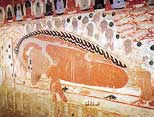
Overview
Situated along the Silk Road, Gansu was an economically important province, and a cultural transmission path as well. Temples and Buddhist grottoes such as those at Mogao Caves (Caves of the Thousand Buddhas) and Maijishan Caves contain artistically and historically revealing murals.
An early form of paper inscribed with Chinese characters and dating to about 8 B.C was discovered at the site of a Western Han garrison near the Yumen pass in August 2006.
When the dawn of civilization first shined over the extended mountains, Gebi dessert, valleys and rivers of the west, the splendid spectacles had already been written into the history of Gansu and its rich civilization.
Know more
On the eastern edge of the Silk Road in prehistoric period, Gansu was host to a number of Neolithic cultures. for example, the Dadiwan culture, from where numerous archaeologically significant artifacts have been excavated, flourished in the eastern end of Gansu from about 6000 B.C to about 3000 B.C. Others are the Majiayao culture and part of the Qijia culture also took root in Gansu from 3100 B.C to 2700 B.C and 2400 B.C to 1900 B.C respectively. With such the romance of the Old Silk Road, Gansu is everything to be dreame off.
Ruined cities, the winding Great Wall, relics of ancient castles buried under thick yellow soil and Gebi dessert, are telling smashed feats of ancient emperors and kings. Our discovering lost civilization tour is just along the Hexi corridor to the edge of Gebi desset, just on the Old Silk Road.
Ancient Silk Road
Silk was first cultivated in China around 2600 B.C, but it would take two and a half millennia for it to spread west. The Romans first encountered the material while battling the Parthians in 53 B.C and were told it came from a mysterious tribe in the eas. Roman agents were dispatched, commodities bartered and the "Silk Road" established.
The Chinese had known about trade routes going west across the Taklamakan Desert for centuries, however these routes only because important when Emperor Wudi of Han dynasty formed alliances with western tribes against the northern nomads, China's old enemy.
In 138 B.C, Zhang Qian, a court official, was sent west to negotiate with Yuezhi tribe. Unfortunately, he was captured and imprisoned for over ten
years by the northern nomads. When he eventually escaped, he discovered the Yuezhi had resettled in northern India and had adopted a nonviolent way of life. Zhang Qian compensated for his diplomatic failure by returning with invaluable information about the areas to the west of the empire and the intrigued emperor launched more exploratory missions.
Trade quickly grew from these diplomatic missions and the Silk Road was established. It would eventually become a vast conduit for exchanging goods and information, stretching betwween three continents and thousands of kilometers from Chang'an(the Han dynasty capital) to Dunhang, through Turpan, Kashgar and into modern Afghanistan, Iran and Syria with further branches connecting to the Roman Empire and the Black Sea. Most caravans only traveled a fraction of the route; goods passed through a chain of middlemen from China through Central Asia to Europe.
However, more important than the exchanging of goods was the exchanging of ideas. Buddhism came to China from India over the Karakorum pass and was spread by Silk Road merchants. The Eastern Han emperor showed signs of interest in this new faith, but it was during the Northern Wei dynasty when the government adopted it as the state religion. Many of the local ethnic groups living along the Silk Road adopted Buddhism and the particularly devout carved grand monuments along the route.
It was during the Tang dynasty when the Silk Road reached its apex; the monk Xuan Zang made his epic journey to India in search of Buddhist scriptures; Chang'an, the cosmo-politan capital, had over 5,000 foreign traders and each year tons of silk and spices passed through the city gates. However, when the Tang dynasty fell, so did trade. The Silk Road finally passed out of use in the 10th century with the discovery of faster and more convenient sea routes.
The 19th century saw a revived interest in the ancient Silk Road and it was at this time when name was first coined. Treasure hunters and archeologists stormed the Silk Road, taking with them whatever treasures they could carry. These relics now fill museums across the world while countless treasures stil lie buried in the sand, maintaining the mystique and romance of the Silk Road.
Must See
Buddha Jumps Over the Wall, or fo tiao qiang, is a variety of shark fin soup in Cantonese and Fujian cuisine. Since its creation during the Qing Dynasty (1644 – 1912), the dish has been regarded as a Chinese delicacy known for its rich taste, usage of various high-quality ingredients and special manner of cooking ...more
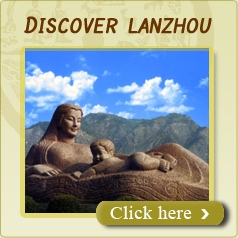

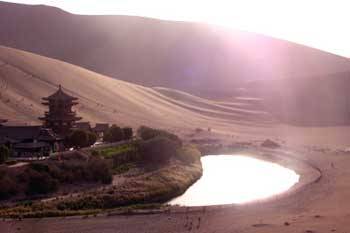
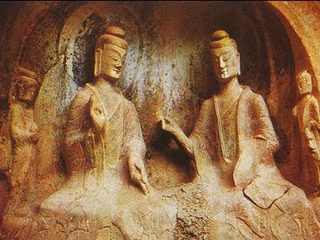
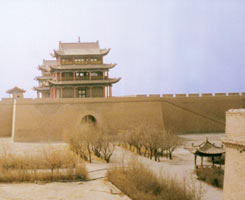
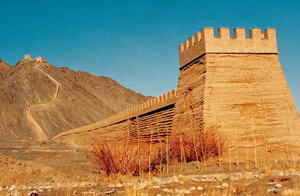
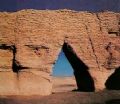
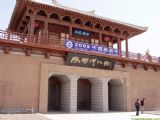


 +86 20 37251788
+86 20 37251788